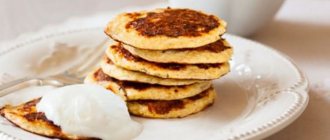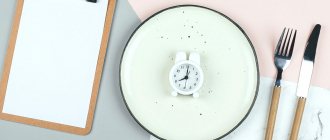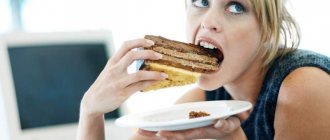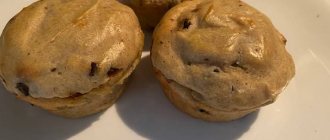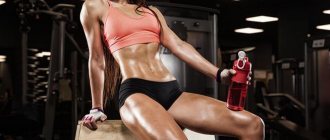What foods should be in the refrigerator for proper nutrition?
A tasty and healthy dietary table is not a myth at all, but a reality. Today, you don’t have to be on a mono-diet to lose excess weight. The healthy and tasty selection of products is so diverse that you can create your own menu based on your preferences. So, what are they, the necessary products for proper nutrition?
- Meat products. The list of healthy foods, of course, includes meat. Unfortunately, plant protein does not contain all the amino acids the body needs that are found in animal protein, so meat must be on your table.
Here we are talking about the most dietary and healthy varieties of meat: chicken, turkey, rabbit, veal, lean beef.These are the foods that are best to always have in your refrigerator to quickly prepare dinner, especially since chicken and turkey, for example, cook quite quickly. A great way is to keep several already boiled chicken breasts in the refrigerator. So, by supplementing the meat with vegetables, you will get an excellent dinner or lunch.
- Fish and seafood. PP products for weight loss cannot do without fish and seafood. Firstly, fish is a source of healthy fats, and secondly, fish is considered a lean dish and contains a huge amount of protein. What you need to pay attention to: salmon, trout, salmon, pink salmon, tuna, halibut, hake, pike perch, lobster, shrimp.
- It is impossible to imagine a list of dietary products without dairy products. When we talk about milk and supplements, first of all we mean dietary fermented milk products, which are low in fat, but at the same time extremely beneficial for our health.
What you should always have in your refrigerator: kefir, natural yogurt, cottage cheese, cheese, yogurt, fermented baked milk.People often try to buy fermented milk products labeled 0%-1% fat, trying to cut down on the number of calories they consume. However, we categorically do not recommend eating completely low-fat foods, since they contain many different synthetic additives and stabilizers, and even trans fats. Moreover, such products do not help satiate our body in any way, and sometimes even cause an even greater feeling of hunger. Try to choose an average percentage of fat content, for example, cottage cheese - 5%-9% fat content, natural yogurt - 3.2%-4% fat content, kefir - 2.5% fat content.
You can choose from cheeses: feta (5%-15%), ricotta (13%), low-fat Oltermani cheese (16%-17%), mozzarella (23%), chechil (5%-10%). In general, it is believed that the usual fat content of cheese is from 40% to 50%, light - from 20% to 30%, low-fat - less than 20%.
- Eggs are included in the mandatory list of dietary products. True, here it is better not to overuse the yolks, but to focus on the whites.
- Vegetables and greens. It’s hard to imagine PP products for weight loss without a rich variety of greens and vegetables. The choice here is truly huge: cabbage (white cabbage, red broccoli, cauliflower, Brussels sprouts, Savoy sprouts, kohlrabi, Peking cabbage, Chinese cabbage, kale), peppers, tomatoes, carrots, eggplants, beets, celery, cucumbers, onions and garlic, radishes, radishes , turnip, pumpkin, zucchini, asparagus, atrishok, dill, parsley, squash, green peas.
Also, we should not forget about the huge selection of greens, which you can eat without any twinges of conscience due to their extremely low calorie content. Here are the top most popular types of lettuce: romaine, arugula, spinach, lettuce, iceberg, frisee, batavia, sorrel.Let your refrigerator have as many vegetables and herbs as possible, then the risk of eating junk food will be minimized.
- Fruits and berries. Make sure that there are always fruits and berries in your refrigerator, then the temptation to eat sweets will be much less!
What to look for: apples, grapefruits, oranges, pineapples, avocados, mangoes, kiwis, bananas, peaches, grapes.Some fruits contain a fairly high glycemic index, such as bananas and grapes, but this is not a reason to exclude these fruits from your diet.
Let’s not forget about berries, which are good to eat as snacks (this is especially convenient if you eat by the hour and take snacks with you), as well as dessert!
The choice of berries is huge: blueberries, blueberries, cherries, sweet cherries, strawberries, blackberries, raspberries, cranberries, lingonberries, currants.
- Proper nutrition products are, of course, cereals. Carbohydrates contained in cereals are considered slow, which means that the body will spend more time absorbing them, and you will not feel hungry for a long time.
The top best cereals look like this: buckwheat, oats, quinoa, brown rice, barley.These cereals contain a lot of fiber, and buckwheat and quinoa are leaders in protein content. Try to alternate the use of these cereals in your diet. Cereals not only perfectly satisfy hunger, but also have a positive effect on the functioning of the gastrointestinal tract and improve peristalsis of the body. Speaking of oats, it should be noted that we are not talking about rolled oats, which have been heavily processed and have lost their beneficial nutrients. Choose oats, or at least whole-ground oat flakes!
- Legumes are definitely included in the set of products.
Include in your diet all types of beans (white, red, black, pinto, green beans, moon beans and others), peas, chickpeas, lentils, soybeans, peanuts. - Whole grain bread can be safely included in the list of dietary products. This bread has a higher fiber content and lower calorie content than regular white bread. You can also add various low-calorie cereal breads to your diet, which are convenient to use as a snack. The main thing when choosing such bread is to carefully study the label and make sure that the composition actually contains wholemeal flour.
- When choosing pasta, also pay attention to what types of wheat they are made from. PP allows the consumption of pasta made from durum wheat, which is a slow carbohydrate.
- Dried fruits . Dried fruits will also help you eat properly; they can be used to safely replace sweets and confectionery. Here is a list of the healthiest dried fruits: dried apricots, figs, prunes, raisins, dates, dried apples and pears.>
- Nuts and seeds. Products for PP are nuts and seeds rich in vitamins and nutrients.
Here, look for: almonds, cashews, walnuts, chia seeds, pine nuts, flax seeds, sesame seeds, macadamia seeds, pumpkin seeds, Brazil nuts.Seeds and nuts are good to use when dressing salads; they will not only give the dish a more refined taste, but also make the dish healthier!
Basic principles of proper nutrition
It is enough to have an idea of the basic principles to understand how to switch to proper nutrition and create a menu not only for yourself, but also for the whole family.
Here are the most important postulates:
- Accustom yourself to regular meals.
The stomach processes incoming food better if it is served at its usual time. The optimal break between doses is three to four hours. With this regimen, the functioning of the gastrointestinal tract improves, problems such as the formation of gases and bloating go away. How to switch to proper nutrition? Divide the entire daily diet as follows: 25% of the total amount of food for breakfast, 35% for lunch, 15% for afternoon snack, 15% for dinner.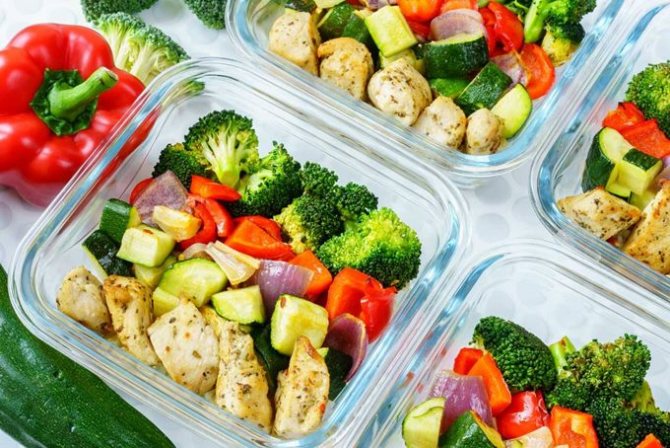
- Be sure to have breakfast.
This is another rule that will help you switch to proper nutrition. Also, train yourself to drink a glass of water before breakfast. A person who has had a normal breakfast will not get hungry until lunch and will not look for something to snack on the go, throwing something like buns and other “bad things” into his mouth. - Don't drink too much while eating.
The point here is that you should not drink several glasses of tea or compote just like that during lunch or dinner. This increases the volume of the stomach, makes food less digestible, and causes bloating and flatulence. Therefore, here is another recommendation on how to switch to proper nutrition: if you really want to wash down your food, choose something from fermented milk products or drink plain water without gases, preferably at room temperature. - When planning your diet, consider your daily routine.
When considering how to gradually switch to proper nutrition, you should definitely take into account the rhythm of your own life. Some work during the day, others, on the contrary, at night, some spend a lot of time driving without leaving the car, and many, on the contrary, are almost always at home. The formation of a diet should be approached individually. - The menu must correspond to the task at hand.
The question of how to smoothly switch to proper nutrition arises for people for various reasons. Diseases, obesity, desire to gain muscle mass, etc. Your diet should be designed accordingly. For example, exclude foods that cause digestive problems, if any. Those who aim to gain muscle mass need to consume more animal proteins. - There are more natural products.
This is also an important point in the question of how to switch to proper nutrition. Include vegetables, fruits, cereals, meat, etc. in your diet. Industrially produced semi-finished products contain excessive amounts of hidden sugar, salt, all kinds of chemical components and preservatives. All this gives the body extra calories. - Minimize your consumption of low-fat foods.
Animal fats are vital for health; the functioning of the nervous and hormonal systems depends on them. If you are faced with the task of switching to proper nutrition and losing weight, include in your diet foods whose fat content does not exceed 1-5%. Then the body will receive enough healthy fats, and excess weight will not accumulate. - Drink enough fluids.
The current general fluid intake for an adult is 40 ml of water for every kilogram of weight. However, nutritionists and physiologists disagree on how to keep track of fluids. The first believe that you should not take into account all the drinks consumed during the day and drink 5-6 glasses of ordinary water per day. According to physiologists, the liquid contained in dishes and drinks also needs to be taken into account, and in general, together with plain water, 1.5-2.5 liters per day should be released.
- Don't eat too much.
An important rule in how to switch to proper nutrition and lose weight is not to overeat. Even if you include only healthy foods in your diet, you should be careful not to consume too many calories. - Take something with you from home if you can't do without snacks.
This may be helpful for those looking for ways to eat healthier. Because, firstly, thanks to snacks, an optimal level of insulin is maintained in the blood, and secondly, this allows you to avoid attacks of hunger and not overeat. - Don't eat unnecessary "junk".
Crackers, chips, corn sticks are very high-calorie products, but completely useless from the point of view of nutritional value. In addition, they can cause allergic reactions, pimples, acne, etc.
Prohibited foods for PP
As you already know, proper nutrition is not based on strict prohibitions and restrictions, however, if you want to lose weight and improve your health, then the list of foods prohibited on the diet will help you with this. What products are we talking about?
- Fatty meats: pork, lamb
- Sausages
- Cheese with a high percentage of fat content - 60%-70% fat content: blue, processed, Camembert, hard varieties.
- Pasta not made from durum wheat
- Bakery products made from white flour
- Confectionery: cakes, pastries
- Ready-made breakfast cereals
- Instant soups and purees, instant noodles
- Canned food and semi-finished products
- Instant oat flakes
- Mayonnaise and other white sauces
- Chips, croutons
- Chocolate bars
How is PP different from a diet?
Example of a grocery basket for a week
The PP basket for the week, first of all, depends on your preferences and income. Let's look at an approximate basic grocery basket for a week on a lower budget:
- Chicken fillet 1 kg - about 250 rubles
- Vegetables (carrots, beets, cucumbers, fresh cabbage, cucumbers, champignons, greens) - about 500 rubles
- Eggs 10 pieces - about 60 rubles
- Fruits (apples, oranges) - about 200 rubles
- Fermented milk products (kefir, cottage cheese (600 grams) - about 260 rubles
- A pack of buckwheat and barley groats, a pack of coarse oatmeal - about 160 rubles
- Whole grain Borodino bread - about 30 rubles
The total budget for pp products for the week was 1,460 rubles.
If we add more expensive products to our weekly grocery basket, the price will, of course, change.
- Turkey fillet (700 grams) - about 350 rubles
- Trout steak (2 pcs.) - 560 rubles
- Vegetables (carrots, beets, cucumbers, fresh cabbage, cucumbers, champignons, greens) - about 500 rubles
- Eggs 10 pieces - about 60 rubles
- Fruits (apples, oranges) - about 200 rubles
- Fermented milk products (kefir, cottage cheese 2 packs, ricotta cheese, mozzarella) - about 460 rubles
- A pack of buckwheat and barley groats, a pack of coarse oatmeal - about 160 rubles
- Whole grain Borodino bread - about 30 rubles
- Avocado 2 pcs. - about 260 rubles.
In total, the grocery budget for the week increased to 2,610 rubles.
This way, you yourself can influence your grocery basket and its budget by planning your menu.
Economical PP menu - budget for the week
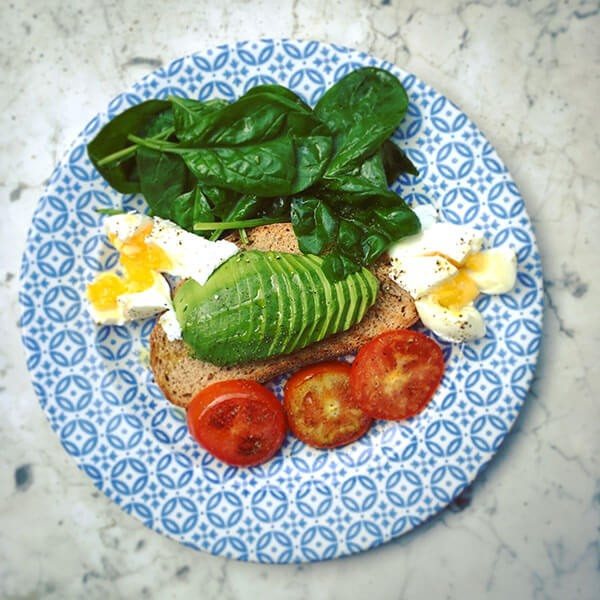
Frequently asked questions on PP
- Dietary foods rich in protein are... There are a huge number of protein-rich foods. First of all, this is, of course, meat, eggs, dairy products and others.
- What foods contain dietary fiber? Fiber is found in vegetables and fruits, legumes and cereals.
- What can you eat at the checkpoint? A healthy snack on PP includes fruits, dried fruits, natural yogurt, nuts and seeds.
- What can you have for dinner with PP? For dinner, you can choose two options: slow carbohydrates + vegetables and greens or protein + vegetables and greens.
- What can you eat at night with PP? If you feel hungry, then before bed it is better to consume fermented milk products, for example, a glass of kefir or natural yogurt. You can eat some vegetables.
- Is PP possible without dairy products? Maybe. Not all people can consume dairy products due to lactose intolerance. A dairy-free diet is recommended for such people, but fortunately, there are many products that can replace milk and allow you to eat healthy. (here is a link to vegan ones, there are milk and cheese substitutes)
- What kind of soups are available at PP? At PP you will have to forget about fatty and rich broths. Give preference to light vegetable soups; they perfectly satisfy hunger and contain a minimum of calories.
- What seasonings and sauces can be used on PP? Seasonings and sauces tend to provoke appetite, so it is better to avoid them on the PP. Plus, sauces and condiments contain a lot of empty calories.
- What sweets are available at the PP? Your best sweets are dried fruits, fruits and berries, honey and dark chocolate.
- Until how long can you eat fruit on the PP? Fruits are best consumed in the first half of the day. Ideally for breakfast or lunch.
Menu diagram for proper nutrition

So, how to switch to proper nutrition? Create a diet that includes enough fats, proteins and carbohydrates for health, because each of the nutrients plays a serious role:
- Proteins should enter the body in an amount equal to 20-30% of the total daily calorie intake. These are vital building blocks of all human systems and organs. Which foods have the most protein? In fish, meat, cottage cheese, dairy products, eggs, legumes and seafood.
- Fats , relatively speaking, are divided into healthy and harmful. The former are found in fish, nuts, seeds, virgin vegetable oils, and avocados. Spread and margarine are considered bad. Proper fats should make up 20% of all calories consumed during the day.
- Carbohydrates are an important source of energy for the brain and the whole body. The amount of carbohydrates should be 50% of the daily value. If you consume less of them over a long period of time, negative irreversible processes may begin in the brain. Therefore, before switching to proper nutrition, keep in mind that the most beneficial for your health are the so-called complex carbohydrates. Their breakdown occurs gradually, thereby delaying the onset of hunger. Complex carbohydrates are found in cereals, vegetables and fruits. But it is better to minimize sugar and baked goods in your diet; these are sources of fast carbohydrates.
When deciding how to switch to proper nutrition without harm to your body, you must try to take into account everything, from age, gender and profession to existing diagnoses, etc.
An example is the following diet model:
- Breakfast: It is good to eat porridge in the morning. Skip the “instant” grains and cook it yourself. Any fruit, and a banana is allowed in the morning. Coffee, tea, compote or other drink, but always hot and without added sugar.
- For a snack: any fruit, nuts or dried fruits.
- For lunch: any lean meat or fish; for garnish - stewed vegetables, porridge or pasta (but only hard varieties); raw vegetables in the form of salad. As a salad dressing, you can use oil, lemon juice, and natural yogurt.
- For a second snack , yogurt, cottage cheese, cheese, kefir, and in general any fermented milk products that do not contain sugar are suitable.
- For dinner: protein-containing foods, for example, lean fish, seafood, boiled eggs; vegetables.
When the question arises of how to gradually switch to proper nutrition, try using the given diagram, it is not at all difficult. You can come up with a very varied menu for it and, most importantly, maintaining a balance in the content of all necessary nutrients.
Please note that some food groups contain the maximum amount of beneficial nutrients:
- The main sources of unsaturated fats are oil (olive and rapeseed), nuts, and fatty fish.
- Low-fat dairy products, vegetables, fruits, whole grains, and legumes contain a lot of carbohydrates .
- Sources of lean protein are dairy products, legumes, any fish and poultry (except skin).
What else do you need to know to switch to proper nutrition? In addition to proteins, fats and carbohydrates, food contains many other components necessary for human health:
- Antioxidants are needed to protect body cells from the harmful effects of free radicals. They are found in large quantities in fresh vegetables and fruits.
- Fiber supports normal intestinal functioning and normalizes cholesterol and blood sugar levels. This is useful to know when setting yourself the task of switching to proper nutrition. Dietary fiber comes from vegetables, fruits, nuts and whole grains.
- Phytochemicals are found in plant foods and actively help fight the formation and development of cancer cells.
Table of permitted products for PP
To make it easier for you to determine whether certain products can be used on pp , we offer you a table created based on the most frequently asked questions of those losing weight.
| PRODUCT | POSSIBLE or NOT |
| avocado | YES |
| a pineapple | YES |
| orange | YES |
| peanut | YES |
| peanut paste | YES |
| banana | YES |
| mutton | NO |
| White rice | NO |
| borsch | YES |
| bulgur | YES |
| vareniki | NO |
| hematogen | NO (contains a lot of additives and sugar, has a high calorie content) |
| beef | YES |
| beef tongue | YES |
| peas | YES |
| pea soup | YES |
| bitter chocolate | YES |
| buckwheat | YES |
| melon | YES |
| gum | NO |
| raisin | YES |
| squash caviar | YES |
| potato | YES (baked) |
| kefir | YES |
| kozinak | NO (it is better to replace with pure nuts and seeds) |
| sausage | NO |
| Canned peas | YES |
| smoked fish | NO |
| crab sticks | NO |
| corn | YES |
| chicken breast | YES |
| couscous | YES |
| lazy dumplings | YES |
| Turkish Delight | YES |
| pasta | YES |
| mango | YES |
| semolina | NO |
| butter | YES |
| honey | YES |
| Mozzarella | YES |
| flour | YES (coarse) |
| muesli | YES (prepared by you personally) |
| meat | YES (low-fat varieties) |
| salted cucumbers | NO |
| paste | YES (from durum wheat) |
| pate | YES (only prepared by you) |
| pearl barley | YES |
| liver | YES |
| seasonings | YES (except those that cause appetite) |
| millet | YES |
| pork ribs | NO |
| rice | YES (only brown and unrefined) |
| fish | YES |
| Ryazhenka | YES |
| salo | NO |
| sugar | NO (better to replace with honey) |
| beet | YES |
| pork | NO |
| herring | NO (retains liquid) |
| mackerel | YES |
| sweets | NO |
| soy sauce | NO (retains liquid) |
| salty foods | NO (retain fluid) |
| salt | YES (in moderation) |
| sausages | NO |
| asparagus | YES |
| crackers | NO |
| dried fruits | YES |
| sushi | YES (rice, vegetables, fish) |
| drying | NO |
| cheese | YES |
| processed cheese | NO |
| cottage cheese | YES |
| stew | NO |
| vinegar | YES |
| beans | YES |
| dates | YES |
| fruits | YES |
| funchose | NO |
| halva | NO |
| bread | YES (whole grain only) |
| bread | YES (whole grain) |
| candied fruit | YES |
| prunes | YES |
| Champignon | YES |
| shashlik | YES (from lean meats) |
| chocolate | YES (bitter) |
| fried eggs | YES |
As you can see for yourself, the list of dietary products on the PP looks quite impressive and makes it easy to create a menu for weight loss that will be varied and healthy. Be sure to bookmark this list and share with your friends - who knows, they might want to join you! If you already adhere to pp, then do not hesitate to share your set of food basket for the week , perhaps your advice will help someone lose extra pounds and improve their nutrition!



